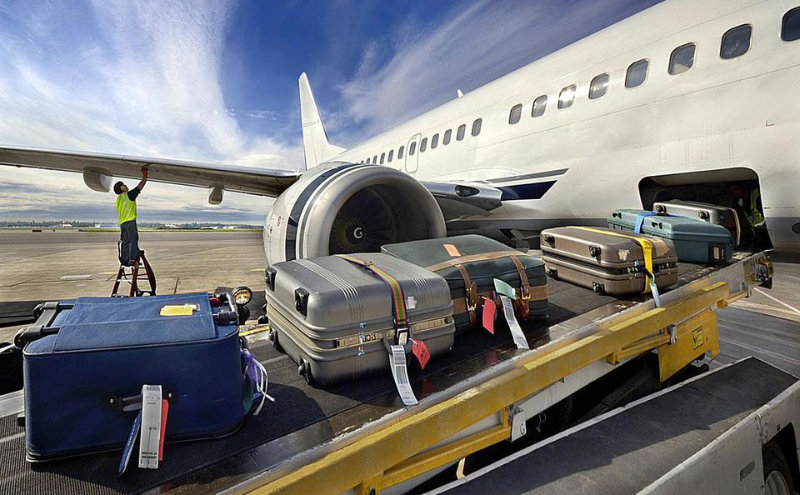List Of Items In A Suitcase For “Get Home” Preparedness

Patriot LEO said, “The wife and I have scheduled some vacation trips this summer, at least one via airlines. When I travel via car I’m usually very well prepared with ‘Get Home’ supplies and equipment (much to my wife’s displeasure due to space), but traveling by plane presents a different situation.”
“Ken, do you or anyone else have a Get Home “list of items” that could go in a suitcase without costing a fortune in over-weight costs and/or space?”
Excellent topic, Patriot LEO! I have posted about this a few times. However it’s a good one to brainstorm about again.
I used to travel a lot during a previous career. It involved overnights stays ranging from one night, up to several weeks at a time. Most all trips were flights (versus driving).
I will list some of the items I would take with me (in a suitcase or carry-on) for Get-Home preparedness…
This will be in no particular order.
CASH
Sure, a credit card is required to rent a car (emergency “get home” if air travel is a non-option). But cash can go a long way towards all sorts of purchases for all kinds of “items” if necessary. I carried a somewhat considerable sum, in a few different places on my person.
[ Read: Being Far Away From Home When It Hits The Fan… ]
FLASHLIGHTS
I would carry a mini flashlight (pocket). I also have one on my keychain. Additionally, a small but efficient tactical flashlight in the suitcase for nightstand. Powered by lithium batteries for longevity.
[ Read: Keychain Flashlight That Fits On Your Key Ring ]
FOOD
Energy bars. A Variety. They’re smallish, calories, and will keep you going. Good snacks too. I like the CLIF BARS.
[ Read: CLIF Bar – One Of The Best Energy Food Bars For Survival Kit ]
WATER
I would buy bottled waters when I got to my temporary destination. I would always be renting a car, so I could keep this in the vehicle (e.g. buying a case of water).
[ Read: Water & Food (Level 1 Preparedness) ]
BACKPACK
Sometimes carry-on bag would be a backpack. I had several types of carry-on bags. Some were more “business” type bags – depending on my trip. But other times I would stuff a backpack inside a checked-bag if I felt the need. It worked out well because some of my business would be “business” while later on the same trip I would be at a job site getting my hands dirty, so to speak – backpack over my shoulder with my tools of the trade… (and/or a real toolkit – my own customized ‘Jensen’ tech kit).
[ Read: Bug Out Bag Kit (Checklist – Packing) ]
PORTABLE AM/FM/SW/ RADIO
There are lots of good reasons to bring a small battery operated radio. I’ve had several over the years. Though they don’t make it anymore, I often took the Sony SW7600GR.
[ Read: Best Portable Shortwave Radios ]
2-WAY RADIO
The BaoFeng is a nice little 2-way radio. If you’re into the tech of it, you can program a wide variety of frequencies to suit your purposes for communications. Basically it’s just another comms gadget which may or may not be within one’s wheelhouse.
[ Read: Best BaoFeng Antenna Upgrade for Ham Radio and GMRS, FRS, MURS Bands ]
ROAD ATLAS – MAPS
Yes, today’s smart phones and GPS apps can get you most anywhere on the planet. However, there’s nothing like a map or road atlas. I’ve always liked maps. Topo maps. Road maps. You name it… It’s quite a different perspective viewing a map than a small screen on a smart phone or GPS. Prior to any trip, I would review the area with online maps – so I would have a better idea. Sometimes I would print a map or two.
[ Read: Road Atlas Maps For Each State ]
KNIFE
Assuming you still can’t take a knife on a plane (I haven’t flown in a while), I would put one in my checked bag. If TSA didn’t steal it, great… I would then have a pocket carry at my temporary destination. If I also checked a tool kit, well, problem solved there too. Be aware of any knife laws at your destination. I recall one trip to the UK where knives are considered pretty scary over there… whoops.
[ Read: The Best Pocket Knife Is The One You Are Carrying ]
FIRST AID KIT
Important. Keep at least the basics in a small first aid kit. Do-it-yourself, or buy a small one for your bag.
DOOR STOPPER
Spent many a night in a hotel. A door stopper of some sort is always a good idea, depending on what kind of hotel/motel you’re at! (or where it is…)
[ Read: 10+ Personal Security Tips For Hotel Stays ]
The request was about items to help “getting home” that you might fit in your suitcase(s) while on a trip.
Consider how far away from home. This may adjust your thinking a bit.
Think about the various “what if” scenarios that may have you “getting home” right quick…
Methods of getting home. Then, how might you accomplish that.
Know the directions to get home.
You’re either getting home by plane, train, automobile, bike, boat, walking… they haven’t invented the “transporter” yet.
Water. Food. Security.
Shelter. Shelter includes your clothes, outwear gear, overnight stay issues or preparations. Weather considerations?
In essence I would be packing a mini survival kit of sorts within my overall luggage. At least the basics. Then go from there.
It’s always a challenge deciding what preps to take anywhere. When space is limited you really have to think about risk-reward and risk-tolerance thresholds.
Okay I’ve said enough, what about your further ideas?
[ Read: Some Of The Preps That I Took With Me During A Long Road Trip ]
